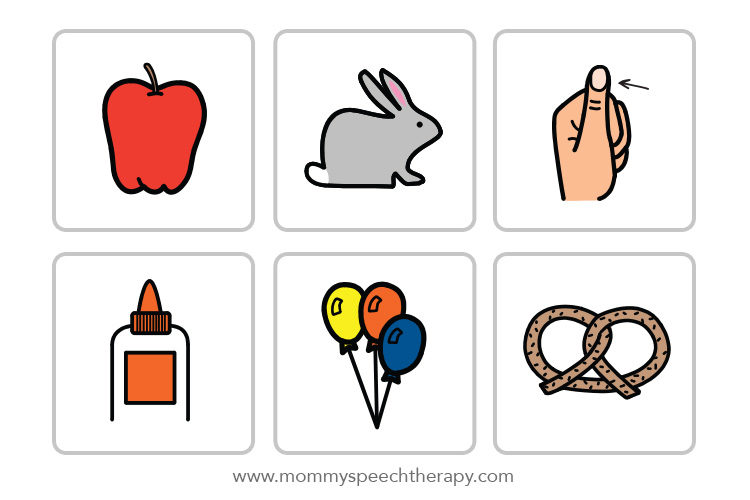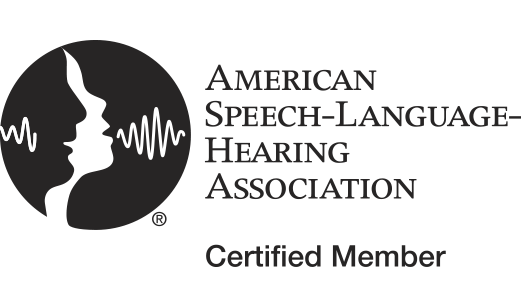Have you ever wondered if your child is saying all the sounds correctly they should be saying for their age, or thought about which sounds your child says incorrectly that makes them difficult to understand? An Articulation Screener can help you answer these questions. Articulation Screeners are used by speech language pathologists to quickly determine which sounds children can or cannot say. They are also used to determine if the speech errors the child says are developmentally appropriate or if they are delayed. Articulation Screeners are not standardized and so they are only used as a reference for therapists, they are not used to determine eligibility for services.
Because it’s already time for “Back to School” (can you believe it?!) I would like to share my Articulation Screener with all of you so that you can have a free tool to use in helping you determine what sounds your kids say in error and whether those sounds are developmentally appropriate or delayed. I intentionally designed this screener to be simple and easy to use for both parents and SLPs. With this screener you will be able to test the consonant sounds and consonant blends in the English language. This screener does not test the vowels or sort errors by phonological processes. This screener is paper based and can be printed for personal use.
How to Use the Articulation Screener
Before you begin, look over the Articulation Screener. There are 5 pages all together. Page 1 is the information and instructions page. Pages 2-3 include all the different sounds that will be tested. Pages 4-5 are the images you’ll use. You can download the screener through the Free Downloads page.
On pages 2-3 you’ll notice that each sound has its own box. In the header of each of the sound boxes you will find the age at which most children have mastered that sound. You will also find a target word with that sound in it in the initial position (beginning of the word), a target word with that sound in the medial position (middle of the word) and a target word with that sound in the final position (end of the word). Each of these target words are important because they help us determine if the target sound is said accurately in all word positions.
Each word has a scoring box to the left of the word. The red scoring box indicates that we are testing the sound in the initial position of the word. The blue scoring box indicates we are testing the sound in the medial position of the word. The green scoring box indicates we are testing the sound in the final position of the word. The sound we are testing will also appear in the same color text as the scoring box next to it, so if we’re scoring “piano” for initial p then we’ll have a red box to left of the word piano and the “p” in piano will be red as well.

All you need now is a copy of the screener, a pencil, your child and maybe a few reinforcements (mini marshmallows, chocolate chips, raisins or whatever will work to keep your kids interested). Place the first page of images in front of the child you are testing then refer to the first sound box on the screener (the P Sound). Point to the piano on the images page and ask, “What is that?” Since the word piano has a red scoring box next to it we know that we are only scoring the initial /p/ sound (also marked with red text) in the word piano. If the child says it correctly we mark the box with a check mark. If the child says it incorrectly we place an X in the box. When the sound is said incorrectly you may want to write how the word was said incorrectly. For example if instead of saying “piano” the child said “ano,” we would write “ano” on the line next to the word. By doing this we can get more information about the kind of errors the child is making. In this example the child left the /p/ sound off completely.

Next point to the word apple. Ask the child, “What is that?” If the child doesn’t know the word say, “I call it an apple, what do I call it?” Following up the prompt with the question, “What do I call it?” insures the child doesn’t say the word in direct imitation of you. Often times a child can say a word more clearly in direct imitation than they can say it in spontaneous speech. That is why to accurately understand which sounds they can or cannot say we should avoid direct imitation of the target words. After the child says “apple” score the child’s production of the /p/ sound in the middle of the word (marked in blue) in the blue scoring box to the left of the word. Now point to “mop” and ask, “What is that?” Score the child’s production of the final /p/ sound (marked in green) in the green scoring box to the left of the word “mop”.
You’ll notice that sometimes more than one letter in a word is printed in red, blue or green such as “mop”. This indicates that the same word will be used to test different sounds that appear later in the screener. In the example of “mop” the red m indicates that we will be testing the /m/ sound in the initial position of this word in the M Sound box as well as testing the final /p/ sound in the P Sound box. This is the case whenever the same word is used to test different sounds in the screener. To save time you may score these words that appear multiple times, at the same time, or just have the child repeat the word again when you get to that word later in the screener.

After you have tested all the words in the screener add up the total number of X’s (errors) you have in the boxes and put it on the line indicated for the total number of errors in the Age Approximation Box on the 3rd page of the screener. By looking at where that number fits in the table (located below the total number of errors) you can get an idea of whether the number of speech errors present in the child’s speech are developmentally appropriate or if they indicate a delay.
You may also look back through the screener and see which sounds the child you have tested needs work on. You may see that there are certain sounds the child cannot say at all, or you may find that the child is not saying multiple sounds in a certain sound position. You can also quickly look at which sounds the child you have tested is not saying correctly that he/she should be saying correctly based on their age.
- Record the child’s responses for a quick review and as a reference for progress.
- Avoid giving verbal models of the word that is being tested, Say, “What else do you call it?” or “I call it a (name of word), what do I call it?”
- When scoring correct or incorrect responses score only the targeted sound in the targeted sound position (as indicated by the colored box next to the word).
- Have reinforcements handy to keep the child interested and focused on completing the screener.
After you have determined which sound/s the child you are working with needs help on you may be interested in plugging them into my Articulation Goal Tracker to help you outline where to start as well as track progress. You may also be interested in reading, “The Process of Articulation Therapy” for an outline of how to get started once you have determined your goals. If you need tips on how to teach specific sounds you can find them here on Mommy Speech Therapy among my posts on how to teach specific sounds. You can also find worksheets for practicing sounds on my Free Downloads page or you can download Articulation Station Hive on your iPad and/or iPhone for lots of fun, interactive activities for teaching articulation in all 22 sounds.
It’s important to note that if you think your child is delayed it’s very important that they are assessed by a licensed Speech-Language Pathologist. To contact a speech language pathologist for further testing you can search ASHA’s (American Speech Language Hearing Association) website under “Find a Professional.” I hope this screener will help answer your questions about whether or not your son or daughter has a speech delay, what sounds they may need help with and whether or not it is time to seek professional guidance.
As always, I wish you all the best of luck and lots of success!








52 Comments